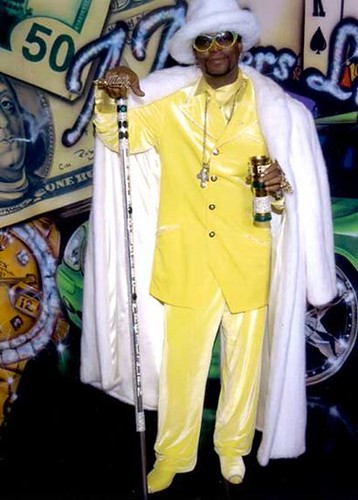
I tried to warn you m@#%f’s (I guess I can say that in a Blog) in” eMPTy Without It“. Maybe you got the message … maybe you didn’t. Ok. Sorry for the harsh tone, but it seems to be the kind of verbage y’all can relate to. I guess it’s true… pimpin ain’t easy.
Everybody seems to have a personal trainer. But… the question is… is he or she a developer (“Gainer”) or like most–a “Maintainer?” Like I said before, “maintainers” have a certain value, only they’re just what the term implies– maintenance people. Can’t have a fancy high-rise without a maintenance plan . The structure would lose its value before its time ( I agree). That’s why Maintainers are great for what they do and necessary for top-level competitors. But who in the world would hire a maintenance person to build an annex, a new floor or even remodel a facility. Maybe an architect, or developer… but a maintenance person only!? WTF#@$?!
So I ask. Why are so many top-level players hiring maintenance people for “additions” to their game? I’m curious what the maintainers are saying to these guys and gals to get them to believe they are actually changing skill levels. Unless, it’s the players simply taking advantage of the “luxury” of not having to change too much and being satisfied with where they are (maybe scuurrred….. of work of this type– at least). I understand the reluctance. Being good, outrageous and ridiculous already makes it even harder (psychologically) to initiate change and get better beyond that. Plus, programming new information into your (brain) and in many cases, over-writing existing programs, is no joke.
On top of that, it seems that too many top-level Maintainers are “Pimps” who have positioned themselves with ridiculous “game” of their own. I know of one “top flight” maintainer who never played or coached… but he did go to law school and presumably slept at a Holiday Inn? Maybe that’s when he came up with his workouts and the lyrics needed to sway his faithful following.
So if Trainers or Maintainers are “pimps”, doesn’t that make the players with maintainance people Ho’s? I mean they are giving up that booty and Maintainers do fly around city to city collecting checks. I’d like to get my hands on an audio of one of the sessions…
“Say Mayne… look here! I need you ta dribble down to da blue right der there three times, wit two basketbawls. Ima strap diss here harness around yo sculptid lil waist… hah, hah. Then I want you to make six jumpas wit me holdn owne to da pulley. Nahmean?
Now if you can make jumpas with me hangin on yo ass… you can dam sho make em when it counts in da in the game wid ain’t nobody holdn you ….hanhanhan!!!!! Nahumsayn?”
I don’t understand why so many players accept staying the same or settling for the marginal gains of the common “workout.” If you’re a level 80 player, It IS still possible to get better, and I don’t just mean in better shape. Getting in better shape will enable you to demonstrate your current skills more easily– perhaps; but it won’t get you to level 85 or beyond in terms of your skill development.
I hope you haven’t been duped to believe you’re maxed out (skill-wise) and all you have to do is get a little wiser…the 100th percentile of function, across all skill sets, is a long way off— even if your name is Kobe or LeBron. Tragically, convincing most players they’re “there” isn’t that hard since so many players have a higher opinion of themselves than the level they are actually on.
The maintainer swoops in and convinces you they are the answer to keeping you where you are (in the league?) a few years longer? I don’t know. I don’t claim to understand the Pimp game…but it seems to work quite well on the street and in basketball . You would think at some point the Ho would call BS on the arrangement. Yet it remains a thriving industry… for the Pimp.

Is there a solution? Is there anyone or any model– other than Virtual Play, that verifiably pushes any player to the next level (regardless of what level he or she may be on). Most of the time people pick up a drill here and a drill there…maybe they ‘re even privy to “top-level” workouts. After they’ve collected enough drills, they start calling themselves “Trainers.” But at the end of the day what they offer is … Yep– a workout.
Either you have a optimization plan to move your game towards the 100th percentile of function (the basketball Matrix) or you don’t!!!!! Any thing short of that is just good “game.” What you really want is a good “Gainer.”
Related: Virtual Training
BE SURE TO CHECK OUT THE OTHER ARTICLES ON THE SIDEBAR UNDER NEW POSTS!








